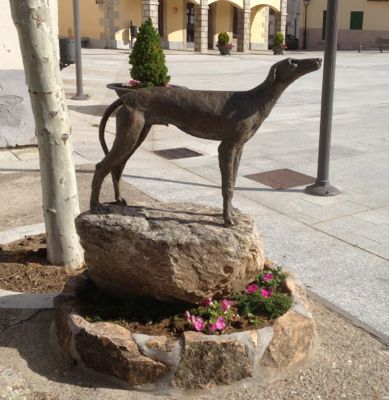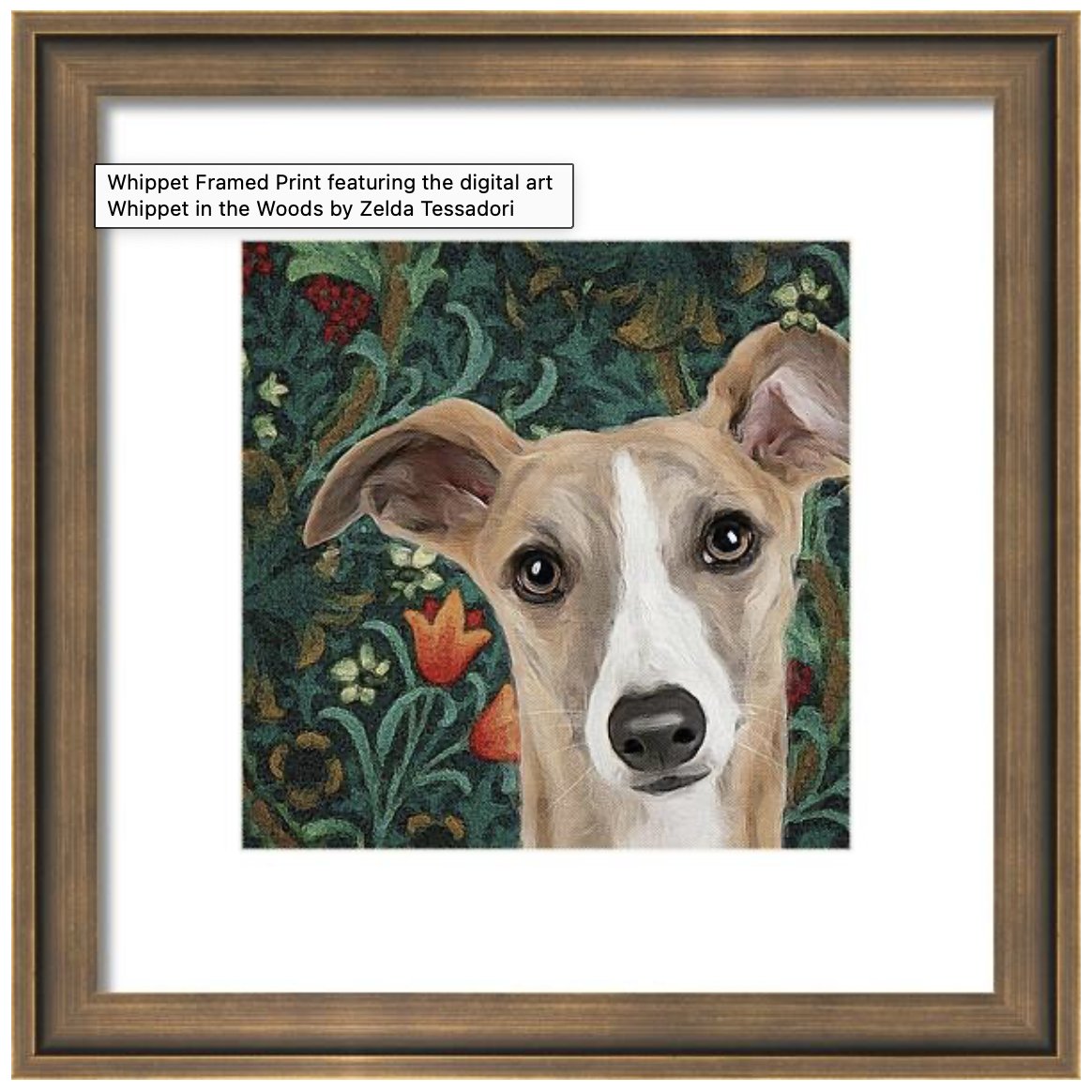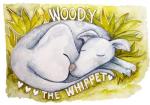Do you have a whippety question? Enter here your query or keyword.
- Home
- Images of a Whippet
- Bronze Whippet Statue
Bronze Whippet Statues
The most popular bronze whippet statue is by the 1800 century artist Pierre Jules Mene. His whippet and greyhound figurines are marvelously lively and detailed.
Who Was Pierre-Jules Mêne?
Pierre-Jules Mêne was born in Paris in 1810. He learned the trade from his father who was a metal turner and taught him at an early age the basics of casting and working with metals.
The young Mêne showed a natural talent for drawing animals and although he never had a formal training at an art school, he excelled in rendering and sculpting his favorite subjects.
He started his career by making models of decorative objects for porcelain manufacturers.
In 1837 Mêne established the first of a series of foundries where he began to cast his own sculptures.
Soon he began showing his creations at the Salon de Paris with a bronze called Dog and Fox. He was very successful and won several international awards for his works.
Mêne’s inspiration came from the animal world, mainly from horses and dogs which he rendered with vivid details and accurate movements.
His fascination for horses was reflected in his ability to capture the movement and the equine elegance typical of hounds.
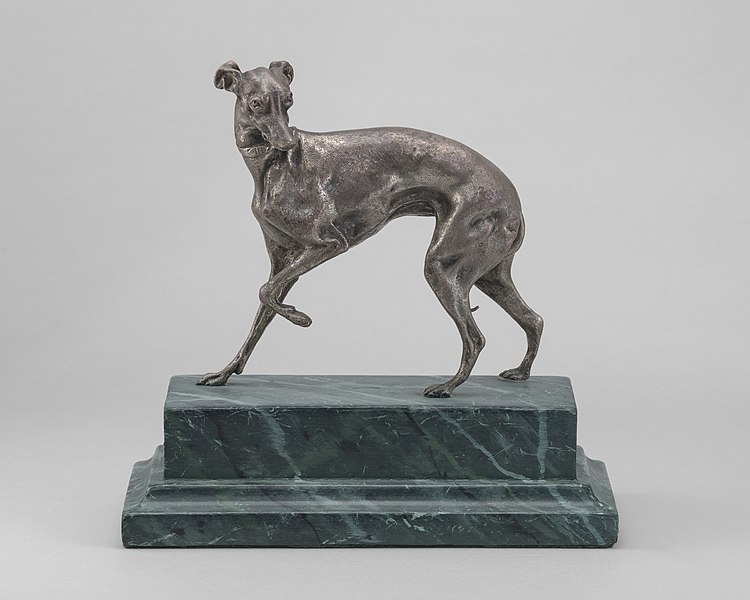
Mêne's Bronze Whippet Statue
His work met the taste of the
rich bourgeoisie of the time and he became very popular in France,
England and eventually his works were exported to America.
His catalog included more than 150 statues of which he made large editions, always keeping very high quality standard to preserve all the details of the original work.
Mêne’s commercial success was also due to his convivial character that turned his workshop in a meeting point for the Parisian artists of the time.
After his death, the artist’s work was carried on by his son-in-law, August Cain and then the models were sold to Susse Frères foundry which continued to sell Mêne’s models almost to our days.
The best original works of Mêne’s today are highly sought after by collectors and sell for top prices but it is also possible to find affordable good replicas.
Mêne’s whippet statues and greyhound figurines impress us for their grace and for the author’s ability to capture in their movement, the character of these beautiful dogs.
Whippet Statues at the Vatican Museum

Such exquisite canines as whippets and greyhounds inevitably provoke an healthy dose of bragging by their owners and apparently even the ancient Romans indulged in showing off their dogs.
The Animal Room at the Vatican Museum shows an impressive display of the finest sculptures of animals of all times.
We were especially impressed by a statue of two dogs of greyhound type sculpted with great accuracy and competence. This statue dates back to roman times but was restored during the 1700 century.
Maybe the roman statues were the trendsetter for the contemporary fashion of displaying greyhound garden statues at the door of well appointed homes.
These life-size greyhound and whippet statues in obedient pose can beautify a home entrance and can help inspire your dog’s behavior if he has troubles curbing his enthusiasm when greeting guests.
They are also a tasteful replacement for your favorite garden gnome if he has been freed by the Garden Gnome Liberation Front.
So far non pranks have been played with the greyhound garden statues and your decorations and investment should be safe.
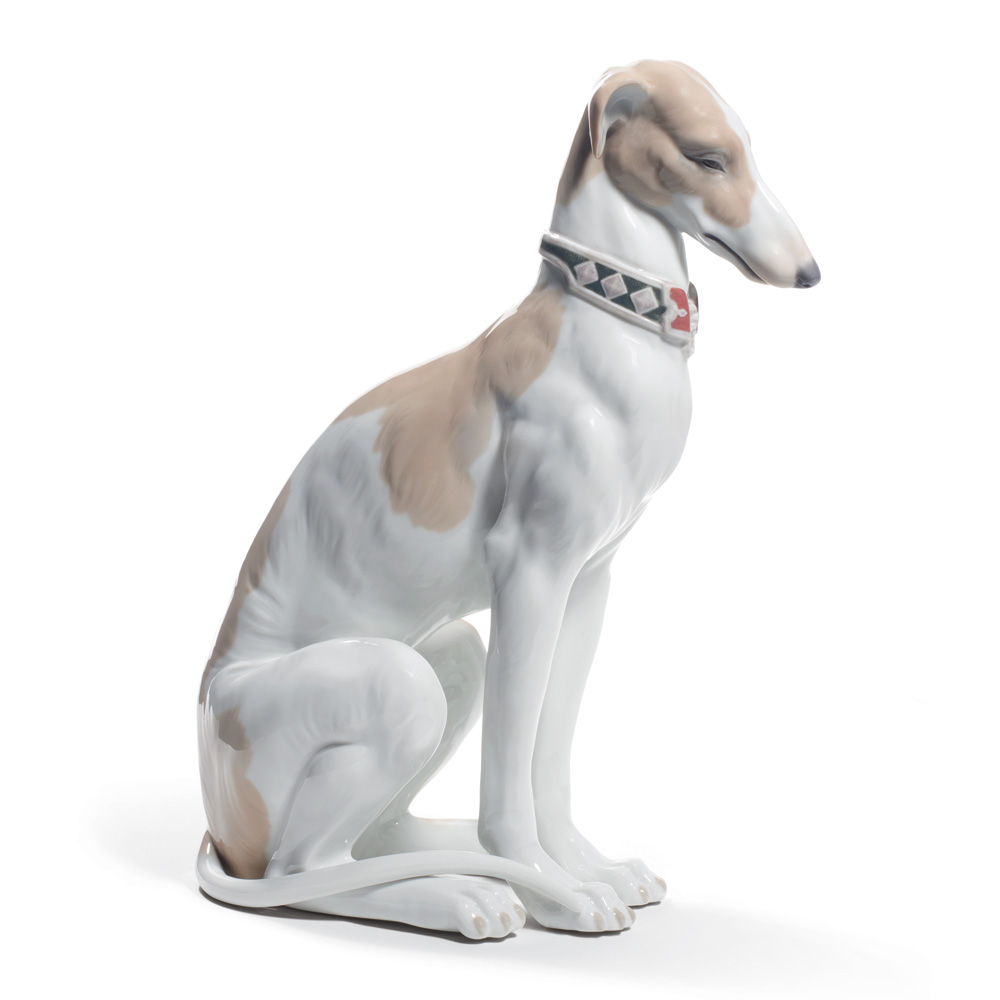
The Art Déco era, between the two world wars, was a moment of great popularity for whippets and greyhounds. The silhouettes of these hounds inspired many artists that rendered these elegant dogs in stylish figurines made of the most diverse materials: silver, bronze or porcelain.
Especially popular are whippet and greyhound figurines made of fine bone china or resin compounds.
The Lldrò figurines, made of fine porcelain, are beautifully proportioned and detailed. They are especially valuable and coveted by the collectors.
Whippet and Hound Statues: My Findings
Whippet statues, with their elegant lines and poised stance, are a recurring motif in art and sculpture across various cultures and historical periods. During museum visits and cultural walks, I began noticing how frequently this graceful breed appeared, particularly in contexts where refinement, loyalty, and quiet strength were being symbolized.
Whether flanking the entry to grand estates in stone or captured mid-stride in bronze within museum halls, whippet statues often represent more than mere canine companions—they echo ideals of nobility and aesthetic perfection.
In classical sculpture, they are sometimes mistaken for greyhounds, their close cousins, due to their similarly lean and athletic build.
However, whippets bring a unique delicacy to the artistic canon: they are smaller, more understated, and often depicted with a sense of gentle watchfulness. My exploration uncovered statues in settings ranging from Roman antiquity to 18th-century aristocratic gardens, and even contemporary public art. These sightings highlight not just the breed’s popularity, but also its lasting place in visual storytelling.
This collection of whippet statues and hound representations serves not only as a catalog of artistic representation but also as a reflection on how we use animal forms to communicate values, tell stories, and connect with heritage across time and space.
